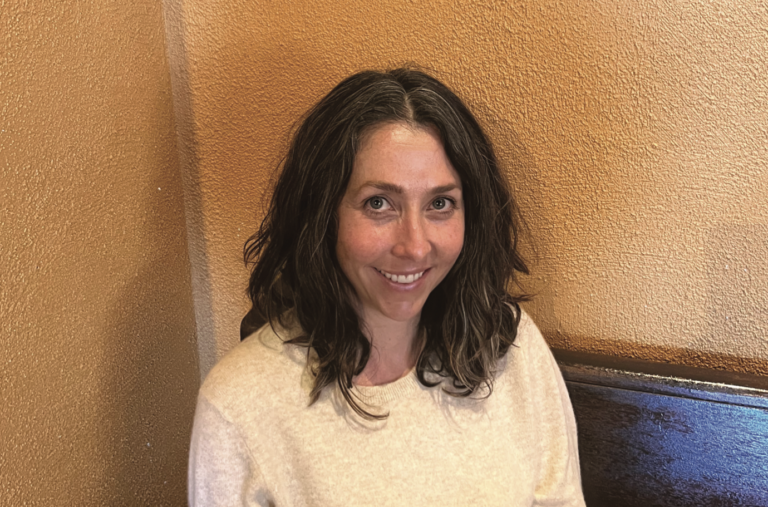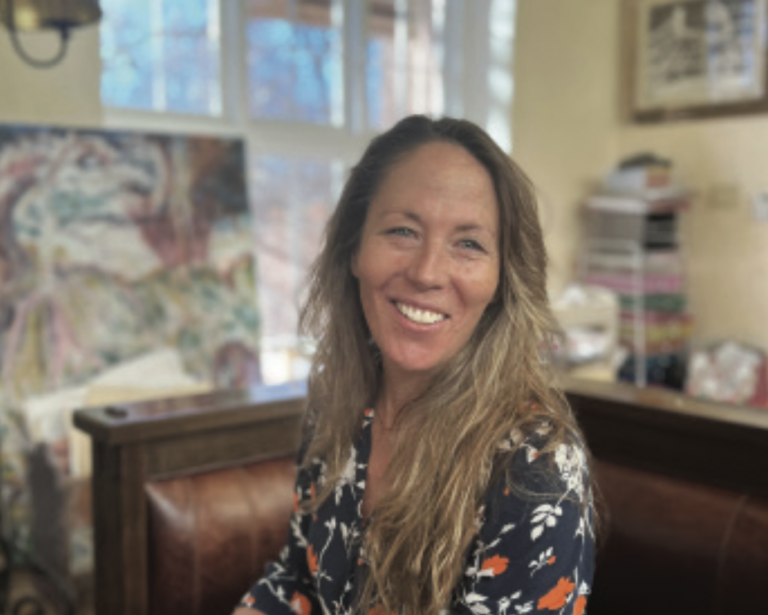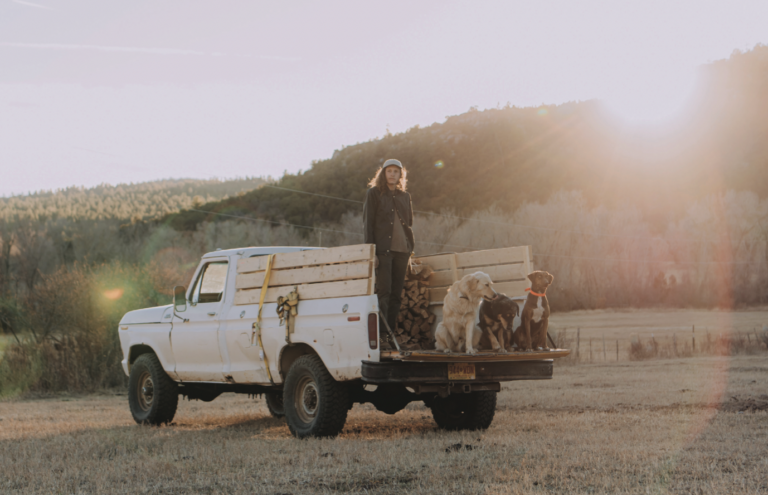HERE’S SOME GOOD NEWS(!) Through a combination of careful planning, sensible pricing, providence (we sit on two aquifers), and diversity of sources (two rivers, two reservoirs), Santa Fe has good reason to believe we can sustain the worst that the present climate has in store for us.
Not incidentally, and perhaps with more providence, we have Jesse Roach heading our Department of Water. He’s a strapping local, a former Colorado River guide, an engineer and hydrologist PhD, and a man who is – and always has been – unapologetically obsessed with water.
So, listen up.
You were a river guide?
Yes, on the Colorado in the Grand Canyon. I’ve always been fascinated by the dynamic, the interplay, between natural systems that provide a service to humans and the sustainability of those things. Learning the story of the development of the Colorado River – from something that was totally wild and inaccessible to something that supported millions of people and millions of acres of agriculture – was incredible.
After that, I was like, Water. Water is what I wanna do. And how do I do water? I wanted to go back to school to either be a water lawyer or a scientist, and I did the latter.
I went to the University of Arizona in Tucson. The less water there is, the more hydrologists there are, so that school has a very strong program in hydrology and water resources. So I got my PhD and kept guiding all at the same time.
Were water issues less palpable then?
Climate change was an emerging thing, but it was cutting-edge. I remember when I was in school, there was still the idea that you can look at the past and know what’s going to happen in the future, like tree rings.
But there was a paradigm shift starting to occur. Instead of looking backwards at what has happened, hydrologists realized that we can’t use the past to predict the future. So how do we know what’s coming? Well, we have to use the best available science.
So science takes the form of what’s happening now and how quickly it changes?
Yes, and from a water planning perspective, starting in 2015, Santa Fe actually started to use climate change rather than just looking at those tree rings.
I was part of that fairly novel approach. One of the specific things we did in that work was look at the water available from the San Juan-Chama Project. See, the Colorado river is split among the seven basin states. New Mexico is one of the upper basin states. Half of the water is allocated to the upper basin and half to the lower. So, in theory, we share half of the river with Colorado, Wyoming, and Utah.
Now, part of that is accessed through a project on the three tributaries of the San Juan, up in Southern Colorado. The tributaries are the Navajo, the Blanco, and the Little Navajo. It’s a fascinating engineering marvel: There are three diversion points on these three tributaries with tunnels between them. So there’s no energy required.
You divert the water into a tunnel, and it flows to one diversion, then the next. Ultimately, it flows through a 13-mile tunnel under the continental divide and into Heron Reservoir, where it’s stored. Santa Fe has rights to that San Juan-Chama water; it’s a very important part of our portfolio. In the 2015 planning study, we looked at how that may be threatened by climate change.
The diversions, tunnels, and reservoir were all based on historic hydrology. According to the latest climate change models, by the end of this century there’ll be a 25% reduction in the San Juan-Chama. But I think those models – run 10 years ago – maybe aren’t fully capturing what’s happening.
It’s interesting that you say “You think.” The fact that somebody with your training doesn’t know for sure…
There’s a lot of uncertainty. These models are a simplified representation of the earth. They assume certain scenarios about greenhouse gas concentrations, right? You have to tell it what the greenhouse gases in the atmosphere are. And you don’t necessarily know.
So, as a water utility, what do we do with these global models? We want to know: How warm is it going be? How much is it going to rain and snow? How many people do we think are going to be in Santa Fe, how much water are they going to use, and how much will be available? Is there a problem?
The first big takeaway was that if we don’t do anything and climate change is on the high side of what these models are saying (and growth is on the high side), we could see shortages in our system by the 2030s. That’s a scary idea.
So what do we do?
The city bought the water and made it a public utility. And we now have a tiered rate structure, where you have reasonable rates unless you use too much. Then it triples. So it sends a strong price signal for people to conserve, especially when your water bill goes up. More efficient landscaping is encouraged.
Even then, how do you water that vegetation? Do you water it from rain that comes off your roof? Or with potable water, utility water? And that’s a question that hasn’t mattered too much yet but will matter more and more in the future.
One of the success stories is the city taking ownership of the utility to push conservation. 25 years ago, our total water use peaked. Since then, it has declined by a third even though we are serving 25% more people. In ’95, it was about 170 gallons per person, per day. Now, it’s often below 90.
Equally important is water and effluent reuse. About two-thirds of the water we produce is used and then successfully flows through the sewer system down to the water reclamation facility. So it is available to us again in some fashion. The big thing we’re working on now is the San Juan-Chama Return Flow Project. So we’ll take the portion that originated as Colorado River water, peel it off, and send it back into the Rio Grande. For every gallon we divert from the Rio Grande, we release a gallon of stored water from Herrin or Abiqui. And
once we have this in place, for every gallon diversion, there’ll be about two-thirds of every gallon returning back to the river. So our Colorado river water can go, on average, three times further than it does now.
Annual water usage is measured by acre feet. We have about 5,000 acre feet of San Juan-Chama water. That’s our contract in a good year. When we divert, it’s effectively an allocation of 15,000 acre feet for us. And it allows us to draw less on our well system. So that’s big.
Tell us about the well system.
Well, it’s kind of a strange savings account. So you go to the ATM and you take out money and can see how much the water has dropped in those wells. But you don’t really know how much is in there until you’re using it too much of it and the water levels are falling. That’s what happened in the ’90s and 2000s – we were using more than was being replenished.
How comfortable should we feel with these wells?
Let me give you a worst-case scenario. The Santa Fe Watershed will burn. It’s not a question of if, it’s a question of when. And when it burns – because of the intensity with which it will burn – we’ll lose one of our water sources. That’s the scenario. So let’s say that tomorrow, there’s a lightning strike up there; it starts to burn, and we can’t control it.
I don’t think it’s a threat to the city because we’re downhill and upwind. But all those trees will burn, and then there’ll be rainfall and erosion and it’ll fill up our reservoirs. So there will be ash in the water, and the reservoirs will have filled in with dirt and debris.
So if this source is gone, we start to use the wells?
The wells could sustain us for several years. But it’s hard for me to imagine how that happens. There’s just too much water moving through here; we’re too adaptable to not have the Rio Grande for several months out of the year.
Meanwhile, you’re reading these articles about the Colorado River and drought and saying, Why aren’t we conserving more? So we’ve created a tool that takes the surface water availability – essentially a proxy for the health of the well fields — and comes up with a score between zero and ten. If you look at the score from 2000 to now, it goes from zero – which is utter emergency – and slowly climbs. Now we’re up in the seven or eight range.
So we’re in pretty good shape?
It is my view that we’re in pretty good shape. We’re using about 75% of what’s available. There’s some cushion. So we’re good at the moment, but that cushion is threatened by climate change, reductions in supply, and increased growth.
What about rainfall?
We are looking at how much snow is in the mountains and how much rain is falling up there. But, most importantly, how much actually shows up as river flow into our top reservoir. That’s the number we look at.
Let’s assume that’s bad, and for 10 years we don’t have anything up there. But remember, we also have four sources: two rivers and two reservoirs. And the rain that falls on the watershed here is much different than the rain that falls on the headwaters of the San Juan River. It’s like having a diversified portfolio.
So you are optimistic?
I used to be more of a Malthusian, like There’s no good outcome here. But the more I study it – and maybe it’s because I see the different ways we can use water – the more I become what I’d call a Cornucopian, someone who believes in human ingenuity.
What’s happening to the Southwest as a result of climate change is incredibly disruptive. Look, it’s not going to be easy, and it’s not going to be fair, but I think we’ll figure it out.
Learn more at santafenm.gov/water
Photo SFM








